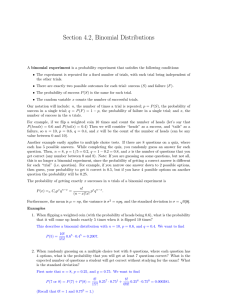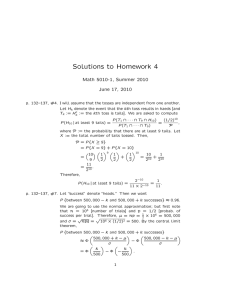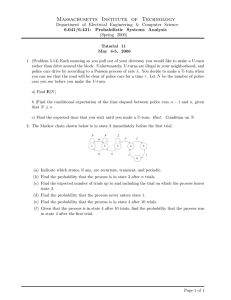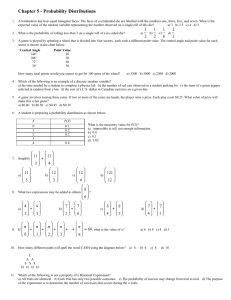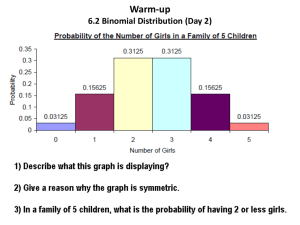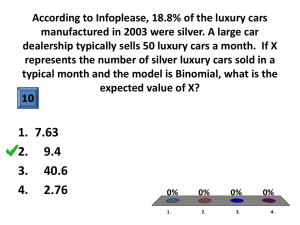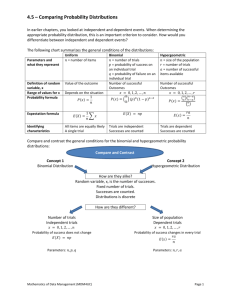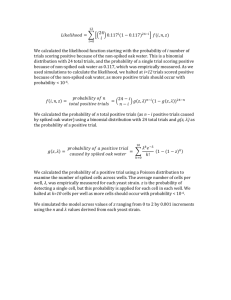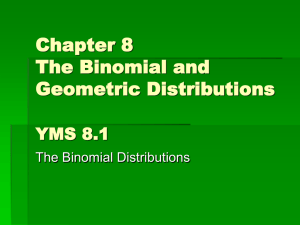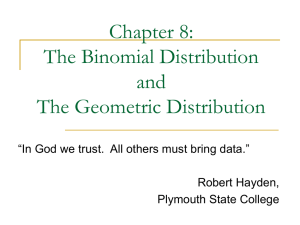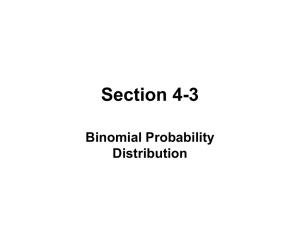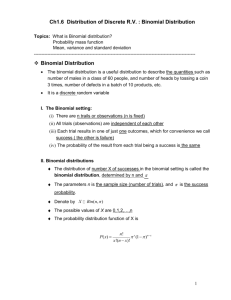8-5 Part 2 Binomial Distribution Notes
advertisement
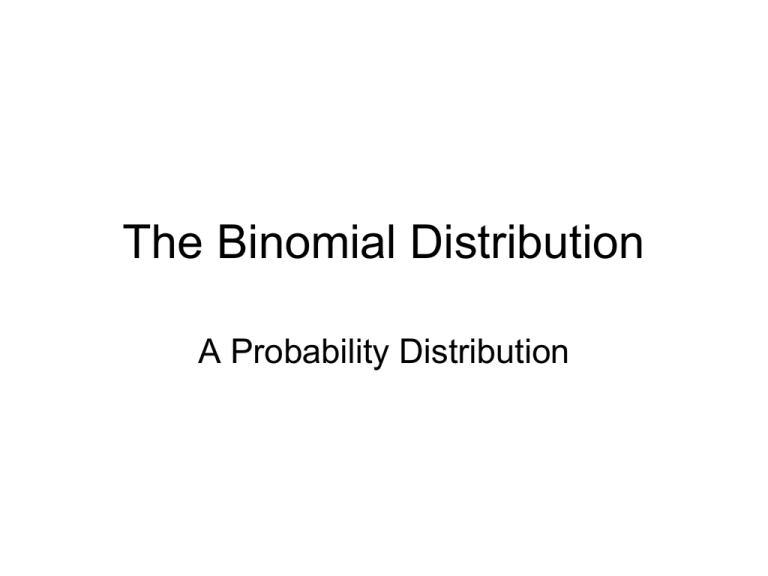
The Binomial Distribution A Probability Distribution Binomial Distribution • • • • Fixed number of trials—n On each trial there is only two possible outcomes—success and failure. Each trial is identical and independent. On each trial, the probability of a success, p, is always the same. The probability of a failure is 1 – probability of a success: q = 1 – p X Β(n,p) n n P( X x) p x q n x p x (1 p) n x , x 0,1,2...,n p p Example 1 Suppose that we decide to record the gender of each of the next 25 newborns born at a local hospital. What is the chance that 15 of them are female? What is the chance that between 10 and 15 of them are female? Example 2 Twenty-five percent of the customers entering a grocery store between 5 pm and 7 pm use an express checkout. Consider five randomly selected customers. Let x be the number who use the express checkout. (a) What is P(x = 2)? (b) What is P(x ≤ 1)? (c) What is P(x ≥ 2)? (d) What P(x ≠ 2)? Example 3 A biology test consists of seven multiple choice questions. Each question has five possible answers, only one of which is correct. At least four correct answers are required to pass the test. Juan does not know the answer to any of the questions, so, for each question, he selects the answer at random. a) Find the probability that Juan answers exactly four questions correctly. b) Find the probability that Juan passes the biology test Binomial Distribution If the random variable X is such that X 1. The expected value of X is Β(n,p) , we have Ex np 2. The mode of X is that value of x that has the largest probability. 3. The variance of X is 2 Varx npq np(1 p) Example 4 You have a 25 question multiple choice test in history that you did not study for (i.e., you won’t know any of the answers). If each question has five possible answers, how many questions can you expect to get correct by guessing? Example 5 In an experiment, a trial is repeated n times. The trials are independent and the probability p of success in each trial is constant. Let X be the number of successes in the n trials. The mean of X is 0.4 and the standard deviation is 0.6. a) Find p. b) Find n. Example 6 The probability that a car will come to a complete stop at a particular stop sign is .4. Assuming that the next four cars to arrive at the stop sign are independent of one another, what is the probability that: (a) none of these cars will come to a complete stop. (b) all of these cars will come to a complete stop. (c) at least one of these cars comes to a complete stop.


